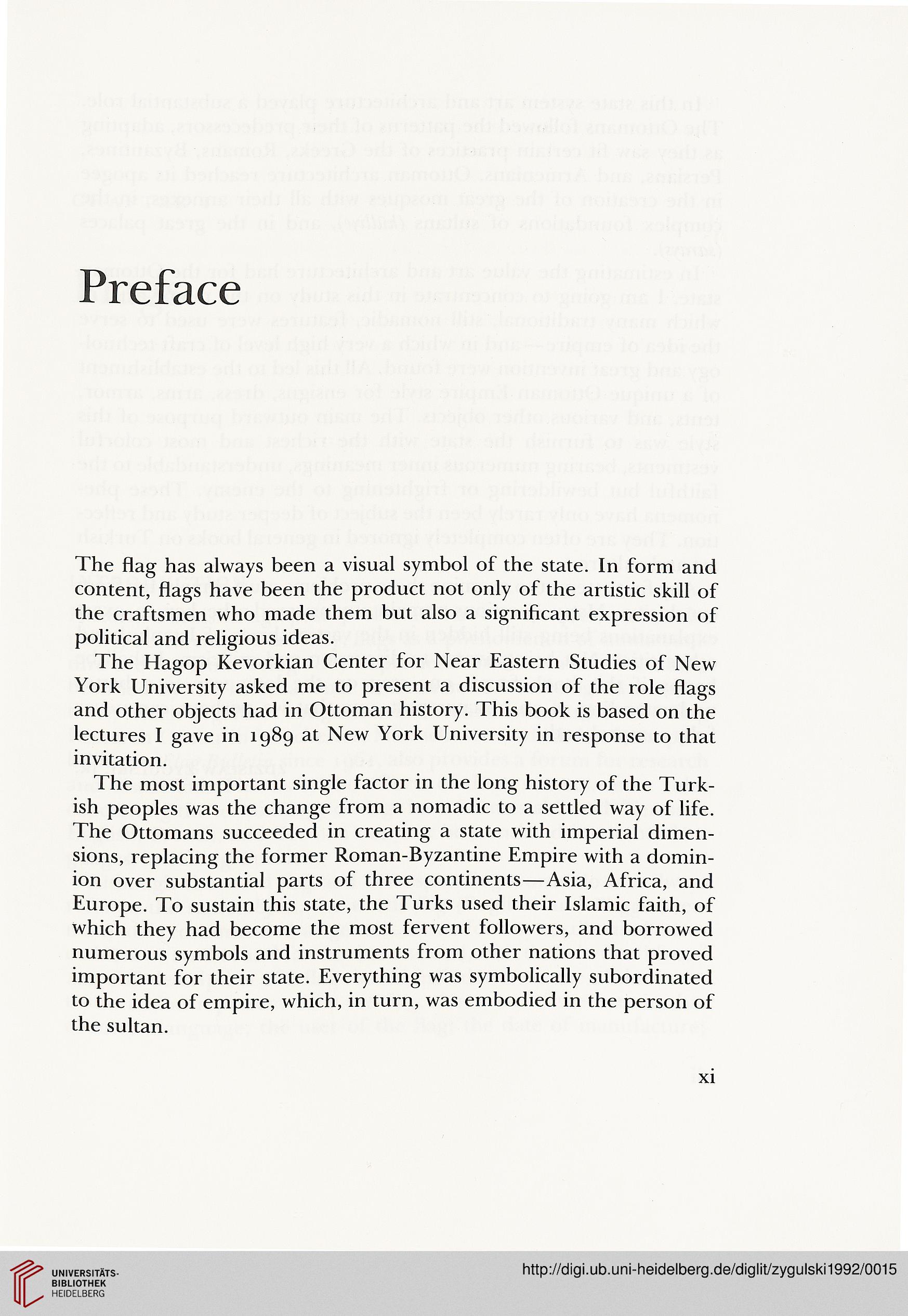Preface
The Hag has always been a visual symbol of the state. In form and
content, Hags have been the product not only of the artistic skill of
the craftsmen who made them but also a signiHcant expression of
political and religious ideas.
The Hagop Kevorkian Center for Near Eastern Studies of New
York University asked me to present a discussion of the role Hags
and other objects had in Ottoman history. This book is based on the
lectures 1 gave in 1989 at New York University in response to that
invitation.
The most important single factor in the long history of the Turk-
ish peoples was the change from a nomadic to a settled way of life.
The Ottomans succeeded in creating a state with imperial dimen-
sions, replacing the former Roman-Byzantine Empire with a domin-
ion over substantial parts of three continents—Asia, Africa, and
Europe. To sustain this state, the Turks used their Islamic faith, of
which they had become the most fervent followers, and borrowed
numerous symbols and instruments from other nations that proved
important for their state. Everything was symbolically subordinated
to the idea of empire, which, in turn, was embodied in the person of
the sultan.
xt
The Hag has always been a visual symbol of the state. In form and
content, Hags have been the product not only of the artistic skill of
the craftsmen who made them but also a signiHcant expression of
political and religious ideas.
The Hagop Kevorkian Center for Near Eastern Studies of New
York University asked me to present a discussion of the role Hags
and other objects had in Ottoman history. This book is based on the
lectures 1 gave in 1989 at New York University in response to that
invitation.
The most important single factor in the long history of the Turk-
ish peoples was the change from a nomadic to a settled way of life.
The Ottomans succeeded in creating a state with imperial dimen-
sions, replacing the former Roman-Byzantine Empire with a domin-
ion over substantial parts of three continents—Asia, Africa, and
Europe. To sustain this state, the Turks used their Islamic faith, of
which they had become the most fervent followers, and borrowed
numerous symbols and instruments from other nations that proved
important for their state. Everything was symbolically subordinated
to the idea of empire, which, in turn, was embodied in the person of
the sultan.
xt





